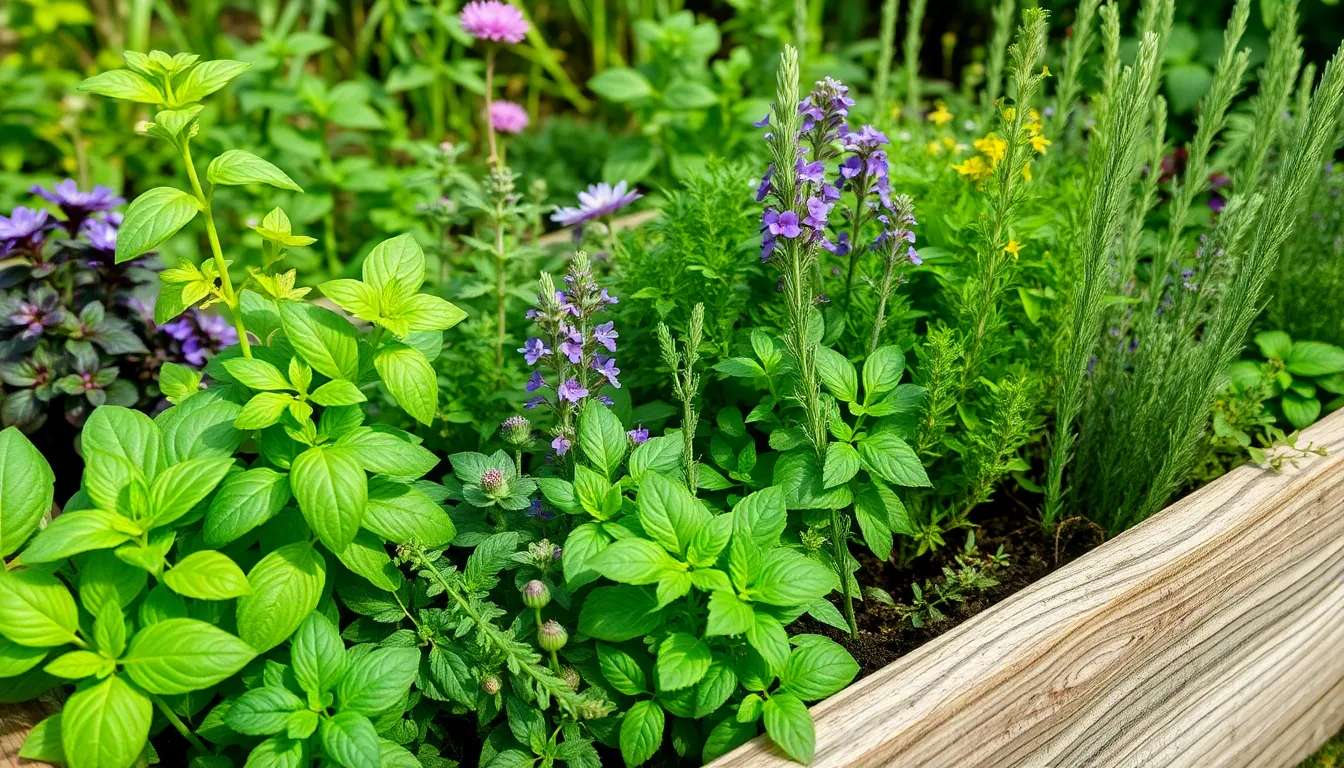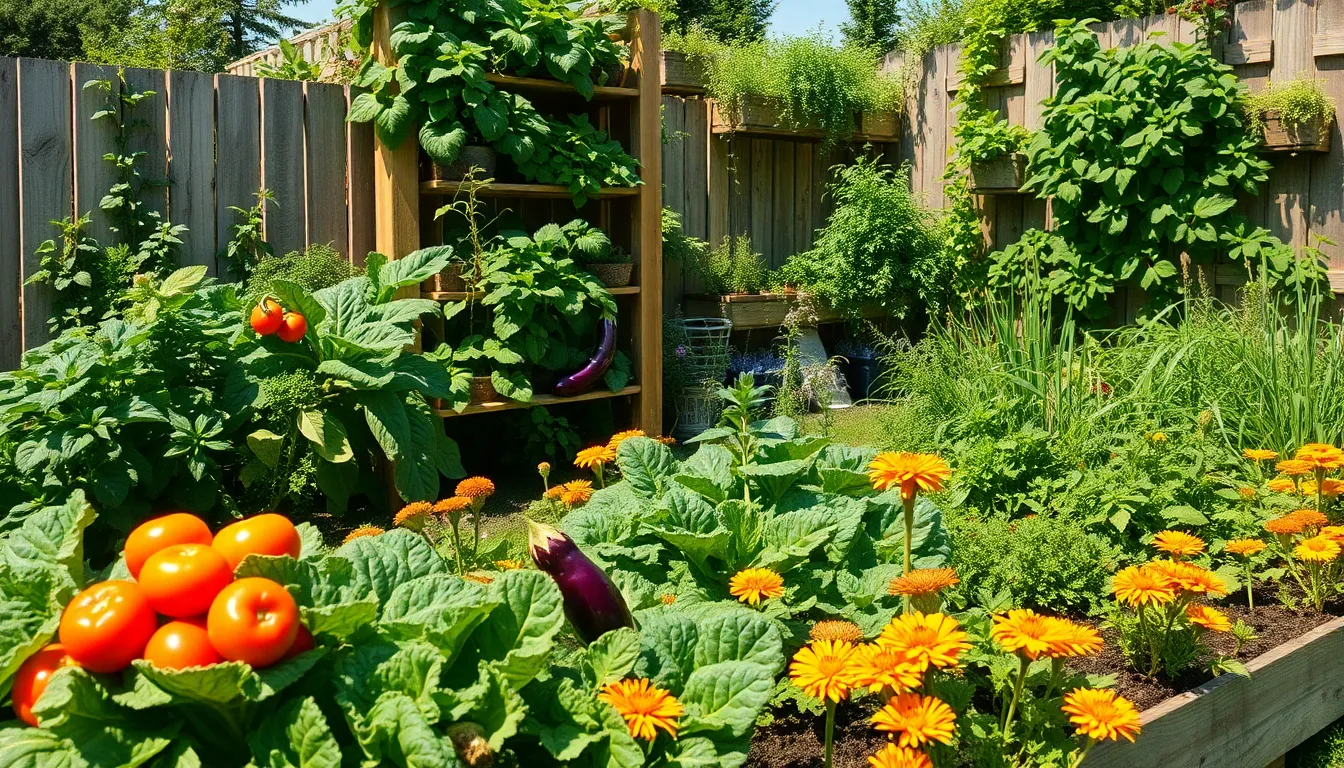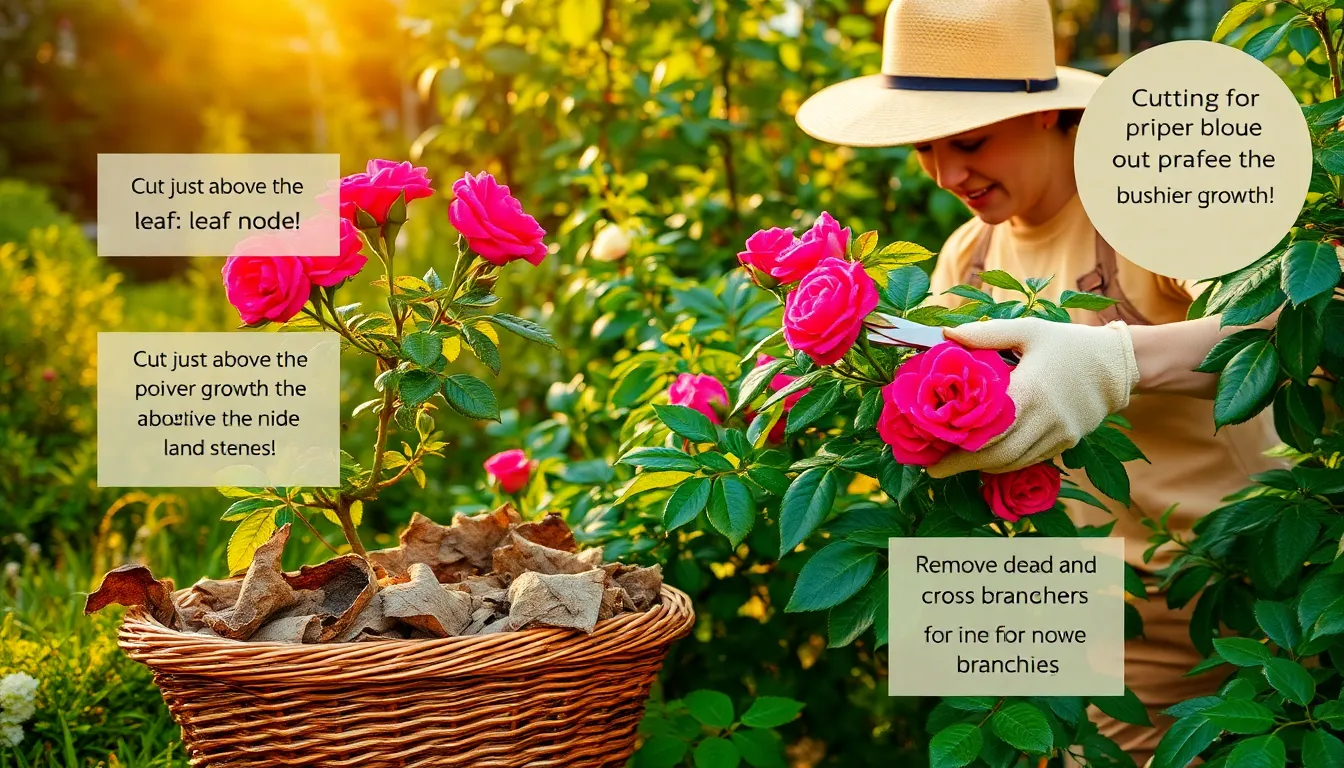Welcome to “8 Stunning Herb Garden Tips,” where we embark on a delightful journey into the world of aromatic leaves and vibrant greenery. Whether you’re just starting with your first seedling or you’ve been nurturing herbs for years, this guide is crafted to inspire and equip you with the know-how to transform your herb garden into a verdant haven.
In this collection of tips, you’ll discover practical techniques that blend creativity with horticultural wisdom, turning your gardening dreams into reality. From optimizing space to enhancing harvests, these strategies promise to elevate your gardening game, offering both beauty and bounty right at your fingertips.
By the end of this guide, you’ll not only feel empowered to cultivate a thriving herb garden but also experience the immense joy and satisfaction that comes with it. So, dig in with enthusiasm, and let’s unlock the secrets to making your herb garden truly remarkable!
Select Sun-Loving Herb Varieties
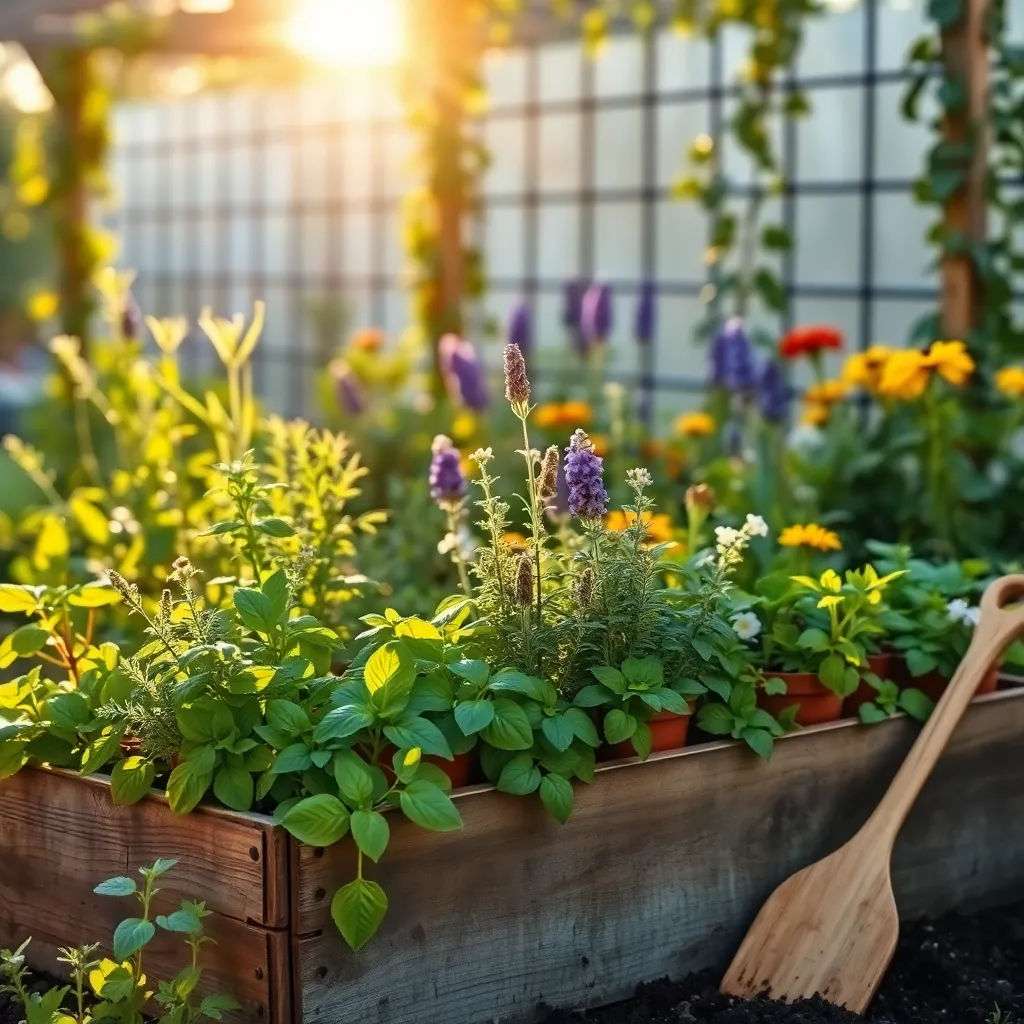
When choosing sun-loving herbs, start with classics like basil, rosemary, and thyme, which thrive in full sunlight. These herbs require at least six to eight hours of direct sunlight daily, making them perfect for sunny gardens or south-facing windowsills.
Basil is a versatile herb that loves warmth and well-drained soil rich in organic matter. To ensure healthy growth, water basil deeply but allow the soil to dry out slightly between waterings, and pinch back the tops to encourage bushy growth.
Rosemary, a woody perennial, prefers sandy, well-drained soil and infrequent watering. It’s drought-tolerant once established, but make sure to water it thoroughly during dry spells to keep it lush and aromatic.
For a more advanced tip, consider harvesting herbs like thyme just before they bloom for the best flavor. Regular harvesting not only provides fresh herbs for your kitchen but also encourages the plants to produce new growth, ensuring a continuous supply.
Plant in Well-Draining Soil
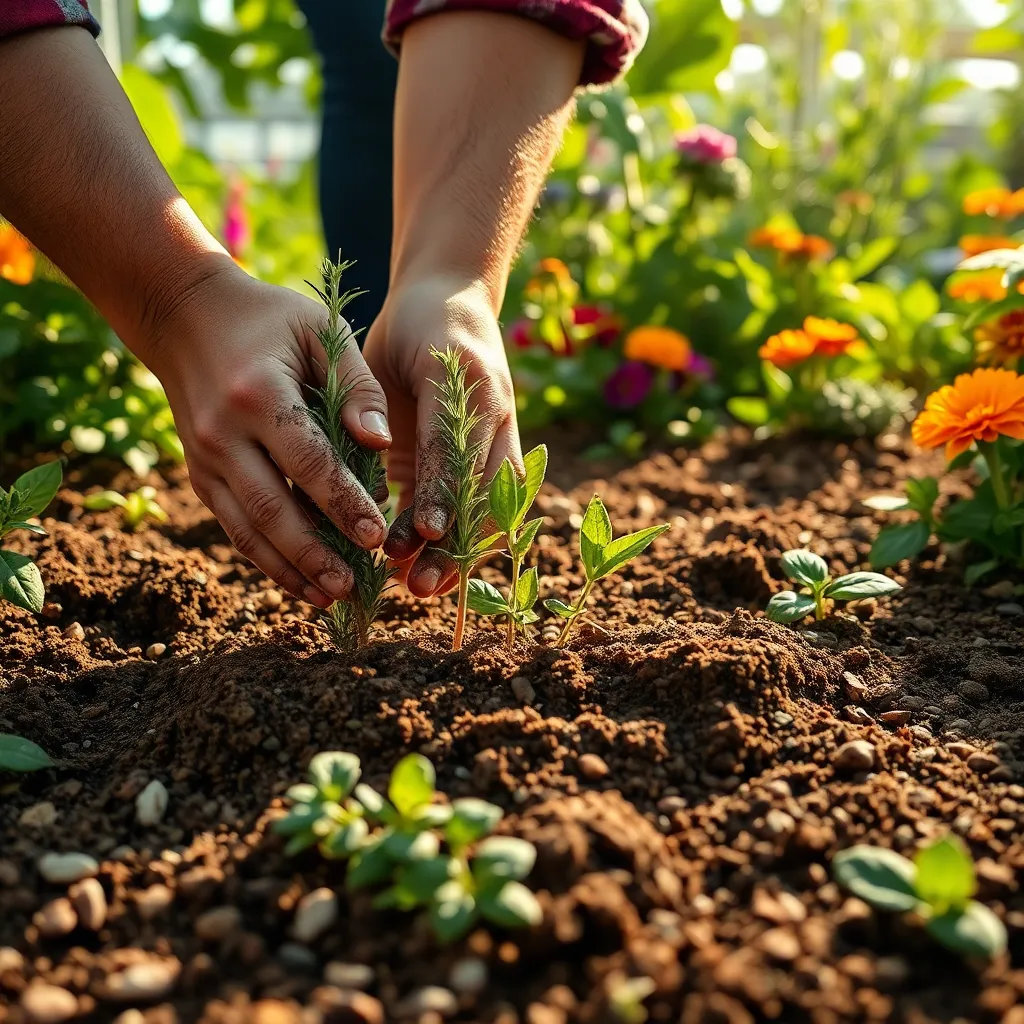
Ensuring your herbs thrive begins with planting them in well-draining soil. Herbs like rosemary, thyme, and sage prefer conditions where water can easily pass through, preventing root rot and other moisture-related issues.
To achieve this, consider creating a soil mix with equal parts of garden soil, coarse sand, and organic compost. This blend provides the right balance of drainage and nutrients, helping your herbs to establish strong roots.
For gardeners with heavy clay soil, amending the ground with perlite or pumice can significantly improve drainage. If you’re planting in containers, make sure they have sufficient drainage holes to allow excess water to escape.
Water your herbs only when the top inch of soil feels dry to the touch. This practice not only conserves water but also encourages the plants to develop deeper, more resilient roots.
Space Herbs for Optimal Growth
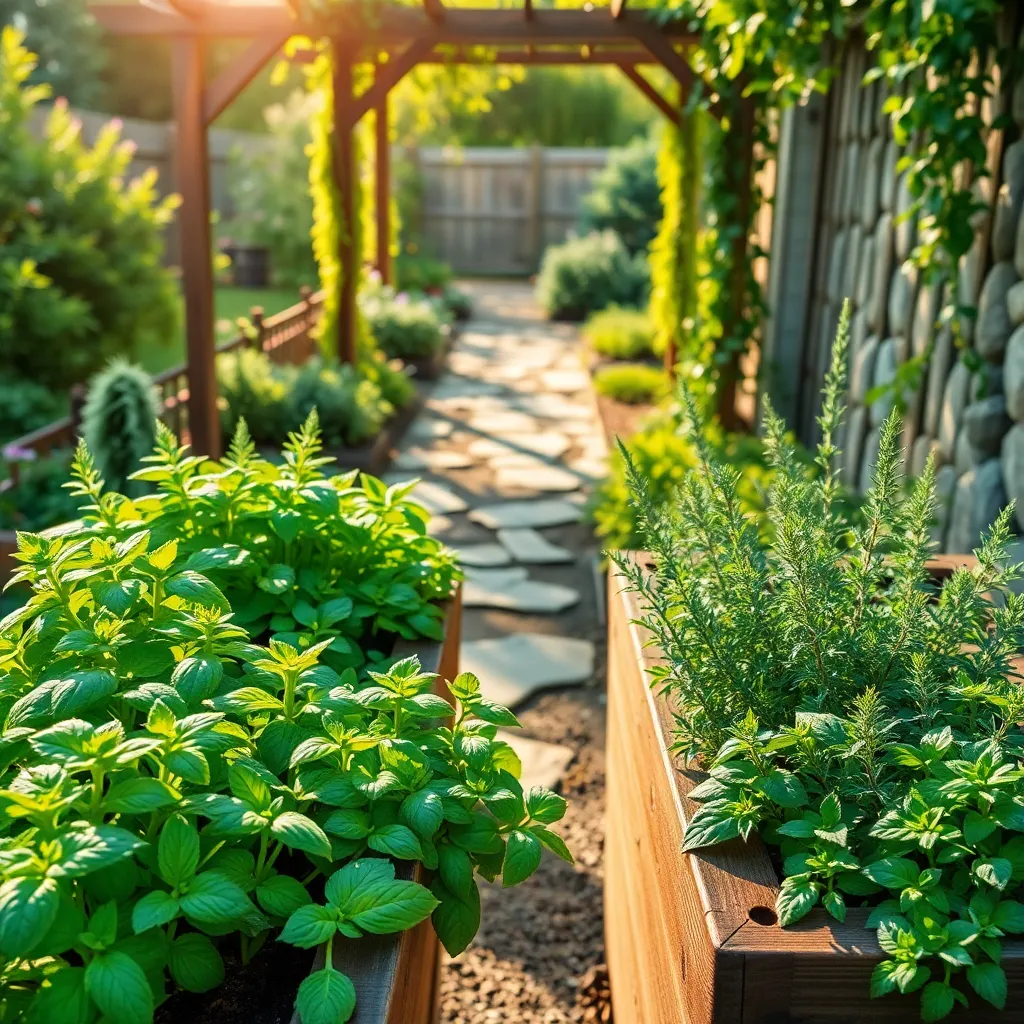
When planning your herb garden, it’s crucial to space your herbs correctly to ensure they receive the optimal amount of sunlight and airflow. Crowded plants can lead to competition for resources and increase the risk of disease, so aim for at least 6 to 12 inches between smaller herbs like basil and parsley, and 18 to 24 inches for larger plants such as rosemary and sage.
Consider the mature size of your herbs when determining spacing to allow them to spread comfortably. You can create a more visually appealing and functional garden by intermixing tall herbs with those that stay low to the ground, ensuring all plants have access to light.
Grouping herbs with similar water needs can further optimize growth and minimize maintenance. For example, plant drought-tolerant herbs like thyme and oregano together, and keep moisture-loving herbs such as mint and chives in a separate section.
For those with limited space, vertical gardening can be an excellent solution. Using stacked planters or wall-mounted systems allows you to grow a variety of herbs without sacrificing precious ground space, ensuring each plant gets adequate light and airflow.
Water Herbs in the Morning
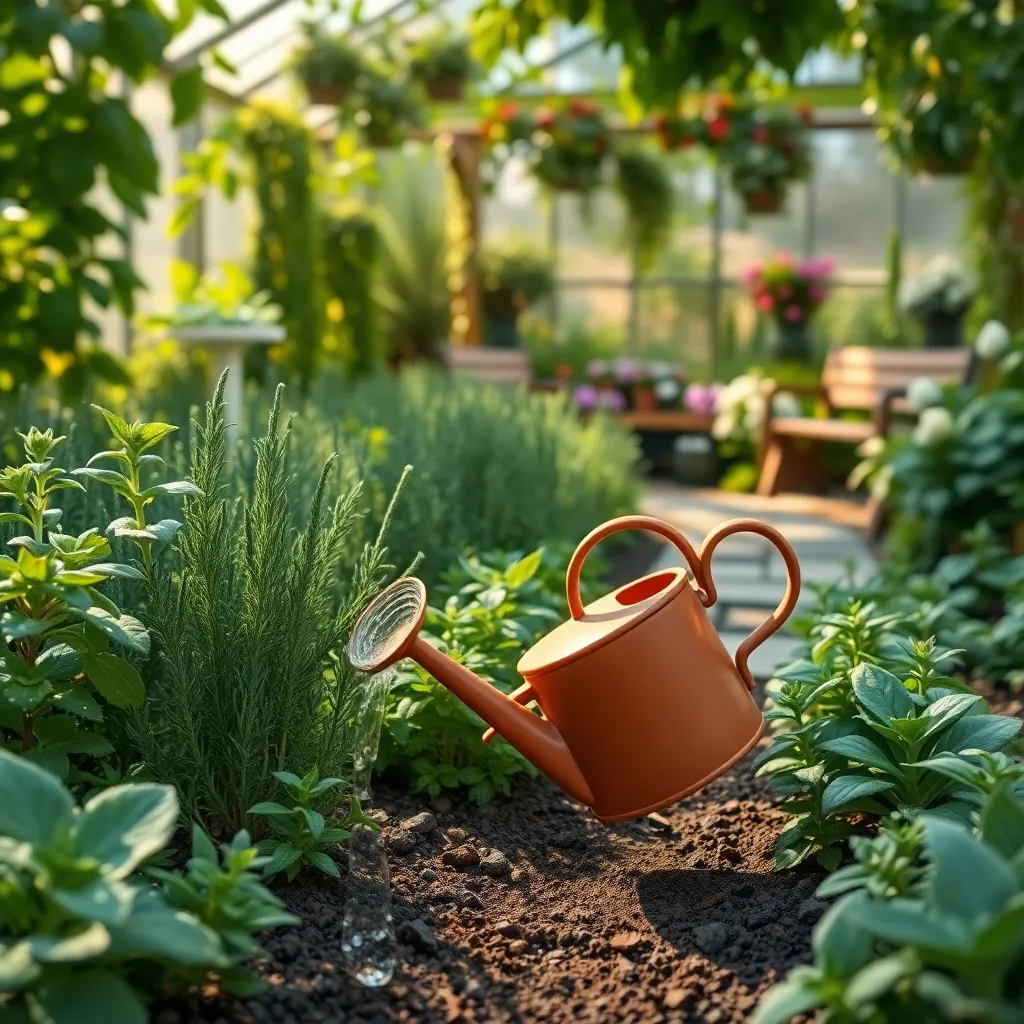
Watering herbs in the morning is crucial for their optimal growth and health. This practice allows the moisture to penetrate the soil and reach the roots effectively, while also providing the plants with the necessary hydration to face the day’s heat.
Early morning watering helps to reduce the risk of fungal diseases. By allowing the foliage to dry throughout the day, you minimize the chances of moisture-related diseases that can thrive in damp conditions.
In addition to disease prevention, morning watering can also improve herb flavor. Herbs like basil and mint develop more robust flavors when they are consistently watered in the morning, as this timing supports their natural growth cycles.
For best results, use a watering can or drip irrigation to apply water directly to the soil, avoiding the leaves. This method prevents water from sitting on the leaves, which can lead to issues like mold or mildew.
Regularly Prune to Encourage Bushiness
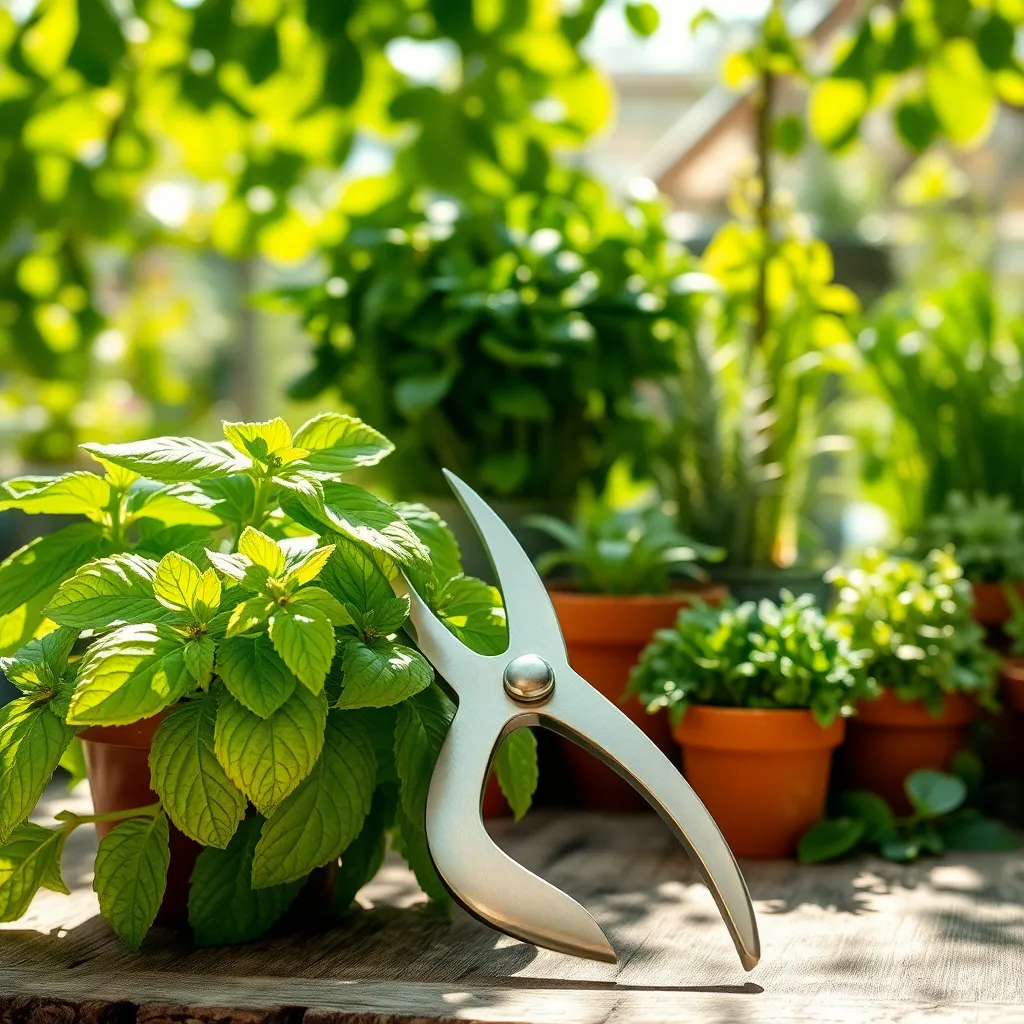
Pruning your herbs regularly is essential to encourage bushiness and promote healthier growth. By pinching back the tips of your herbs, you stimulate the plant to produce more stems and leaves, leading to a fuller appearance.
To start, use clean, sharp scissors or pruning shears to remove the top two inches of the stem. Ensure you cut just above a leaf node to promote branching and prevent damage to the plant.
For beginners, a simple rule is to prune when your herbs are about six inches tall. This helps maintain a manageable size and shape, especially for herbs like basil and oregano, which thrive on frequent pruning.
Experienced gardeners might experiment with different pruning techniques to maximize yield and aesthetic appeal. Try alternating between heavy pruning sessions and lighter touch-ups to see what best suits your plant’s growth pattern.
Consistency is key, so make a habit of checking your herbs every week for any signs of legginess or uneven growth. Regular attention will help you catch problems early and keep your herbs thriving throughout the season.
Lastly, remember that some herbs like rosemary and thyme prefer a lighter touch compared to others. Adjust your pruning strategy based on each herb’s specific needs to ensure optimal growth and health.
Use Mulch to Retain Moisture
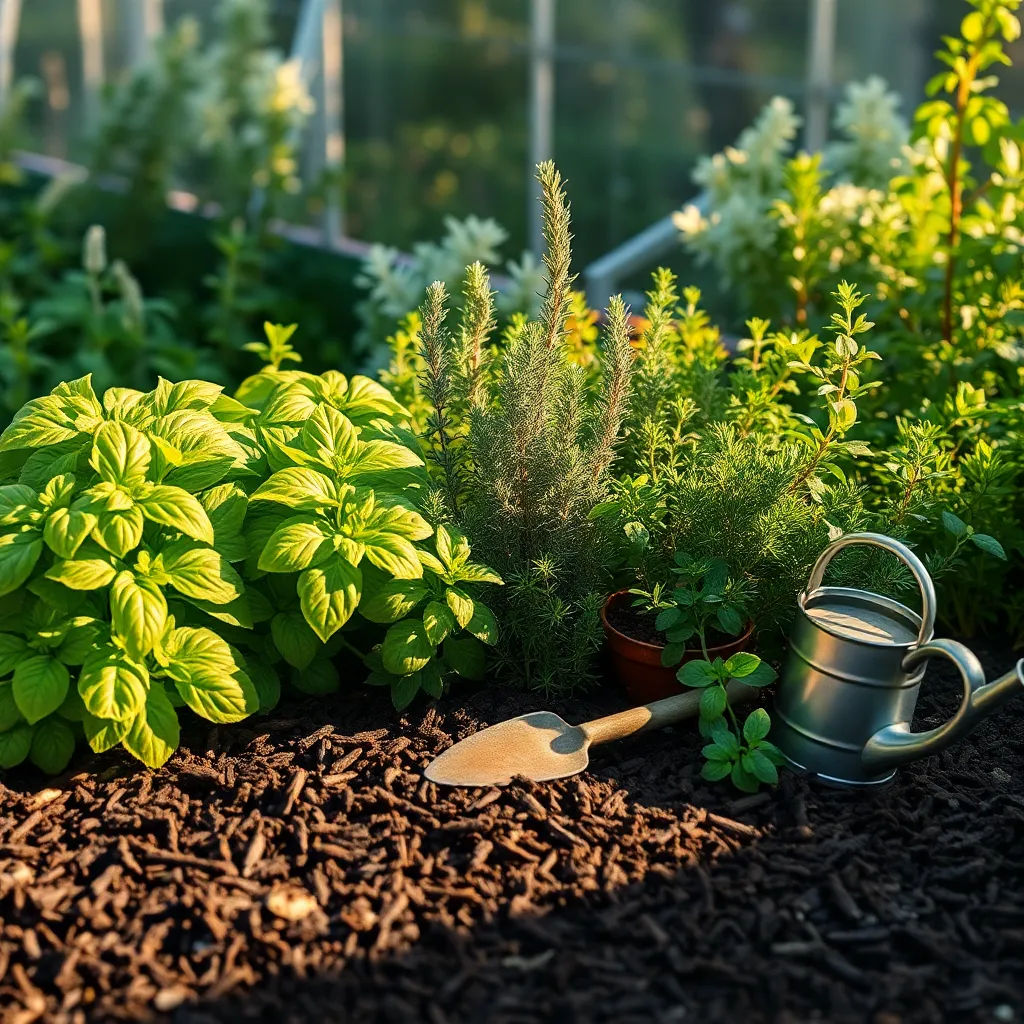
To enhance your herb garden’s health and vitality, using mulch is an excellent method to retain moisture. Mulch acts as a barrier, reducing evaporation and keeping your soil consistently moist, which is especially beneficial during hot weather.
There are various types of mulch to consider, such as organic options like shredded bark, straw, or compost. Each type offers unique benefits, but organic mulches break down over time, adding valuable nutrients to the soil.
When applying mulch, spread a layer that is about 2-3 inches thick around your herb plants, being careful not to pile it directly against the stems. This depth helps to suppress weeds and maintain the moisture level without suffocating the plants.
It’s important to monitor the mulch layer and replenish it as needed, particularly after heavy rains or winds. For those with more experience, try using different mulch types to see which your herbs respond to best, considering factors like soil type and climate.
Rotate Potted Herbs Seasonally
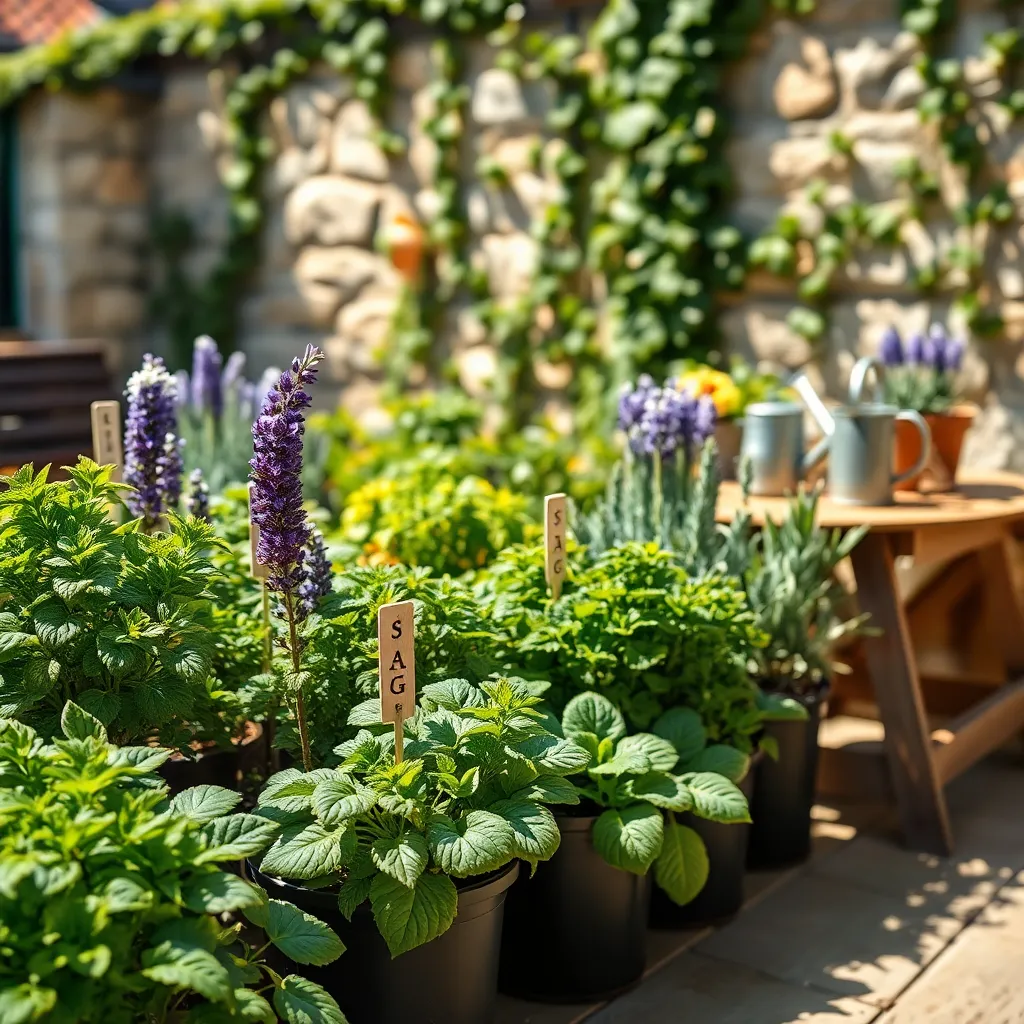
Rotating your potted herbs seasonally ensures they receive the optimal amount of sunlight and temperature conditions they require to thrive. By moving herbs like basil and oregano indoors during colder months, you can extend their growing season and enjoy fresh flavors year-round.
Consider placing your herbs in a south-facing window when indoors, as this location typically offers the most light during winter. Ensure the pots have adequate drainage to prevent root rot, which can be a common issue when they’re moved inside.
When warmer weather returns, gradually acclimate your herbs by bringing them outside for a few hours each day. This helps them adjust to the increased sunlight and temperature changes, reducing the risk of shock.
For more advanced care, utilize a lightweight soil mix that includes perlite or vermiculite to improve aeration and drainage. Watering frequency may need adjustment based on the season; in winter, herbs typically require less frequent watering than in summer.
Feed Herbs with Organic Fertilizer
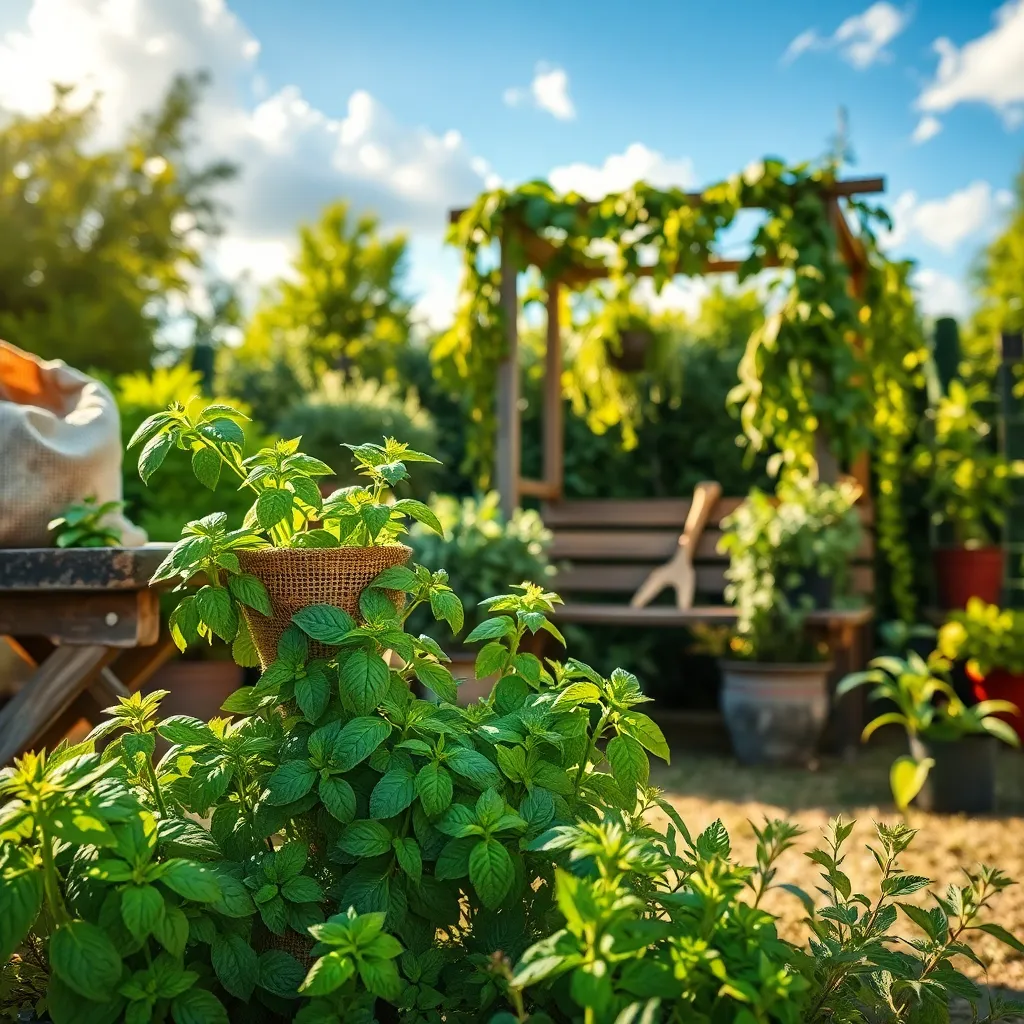
Feeding your herbs with organic fertilizer is crucial for their robust growth and flavor. Organic fertilizers, such as compost or well-aged manure, provide a steady release of nutrients that enhance the soil’s health.
Using organic fertilizer can significantly improve the essential oil content in herbs, resulting in more aromatic and flavorful plants. It’s recommended to apply these fertilizers every four to six weeks during the growing season.
For best results, consider using a balanced organic fertilizer with a ratio such as 5-5-5, which provides an even supply of nitrogen, phosphorus, and potassium. This balanced approach ensures that your herbs develop strong roots, lush foliage, and an abundance of leaves.
Advanced gardeners might explore making their own organic fertilizers by composting kitchen scraps or using worm castings. These methods not only recycle waste but also create a rich nutrient source tailored to your garden’s needs.
Conclusion: Growing Success with These Plants
As you nurture your herb garden, consider these eight stunning tips for cultivating thriving relationships: build a solid foundation by understanding your partner’s needs, create space for growth by encouraging each other’s passions, and water your bond with consistent communication. Just like sunlight nourishes plants, let trust illuminate your relationship, and prune away misunderstandings with empathy and patience. Balance is key—just as herbs benefit from diversity, so do relationships thrive on shared experiences and individual pursuits. Lastly, harvest the fruits of your efforts with gratitude and celebration of each other’s uniqueness.
Now, take a moment to reflect on these insights and choose one actionable step to implement in your relationship today—perhaps setting aside time for a heartfelt conversation or planning an adventure together. Remember, the seeds of a strong relationship are planted with intentionality and care.
To ensure these valuable tips are at your fingertips whenever you need them, bookmark this article now. By doing so, you’re investing in your relationship’s future, empowering yourself to create a partnership that flourishes. Embrace the journey ahead with confidence, knowing that with each thoughtful action, you’re building a foundation for lasting love and connection.

